Dashing through the snow in Sapporo
SAPPORO, Japan— When was the first time you experienced snowfall? While I have walked on slippery, icy snow during my previous travels abroad, I had never experienced snowfall until a few weeks back—on a media familiarization trip to Sapporo. And it was nothing short of magical!
On a Friday morning at APA Hotel and Resort, I giddily watch snowflakes fall from the sky while enjoying my hot cup of Americano. It’s our second day in Japan, having arrived the night before on Cebu Pacific’s inaugural flight last Jan. 16 to Sapporo, a thrice-weekly—Tuesday, Thursday and Saturday—direct service. Sapporo is the carrier’s fifth destination in Japan, following Tokyo (Narita), Osaka, Nagoya, and Fukuoka.
It’s about time the budget airline launched its Sapporo route to make Japan’s winter wonderland more accessible and affordable to Filipino travelers because both the city and the prefecture (Hokkaido) are packed with attractions that are at turns surprising, colorful, and delightful.
Snow or never
Sapporo is young in terms of age, established in 1857 with a population of a mere seven people! Now boasting more than two million, today, Hokkaido’s capital is known for its ramen, beer, and the annual snow festival. It’s also on every snow-chaser’s bucket list. Here’s why:
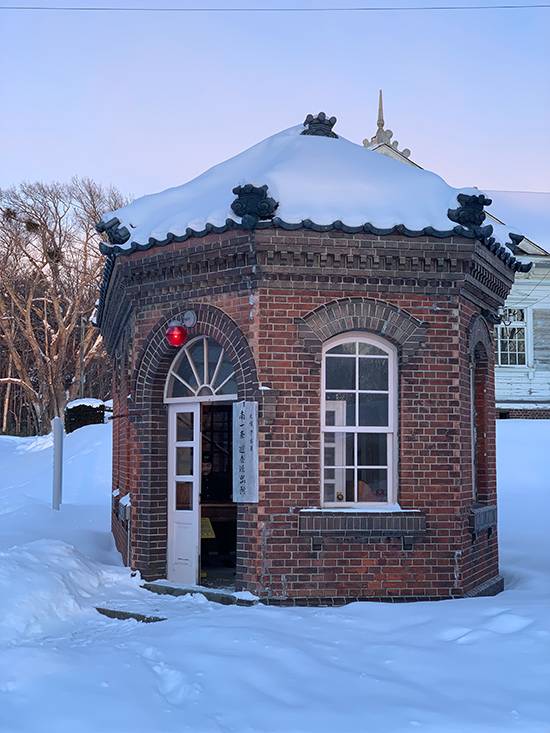
Snow and Sapporo are inextricably entwined: The city hosted Asia’s first-ever Winter Olympics in 1972, and is home to the annual Sapporo Snow Festival. Sapporo’s Olympic history is perfectly preserved at the Okurayama Viewing Point, where the 90-meter ski jump used during the 1972 Winter Olympics is located.
The first snowfall of the year can be seen in November as the cold begins to draw in. From late December, the amount of snow begins to increase which lasts until March.
Let it snow, let it snow
“There’s a snowstorm today so I hope you have your ultra-warm Heattechs on,” reminds our tour guide Arlina—even if we’re all bundled up like the Michelin Man—as our group heads out to Odori Park to commence our city tour.
Touted as one of the best green spaces in the city, Odori Park, which stretches about 1 1/2 kilometers, is now blanketed in snow. And at exactly 9:40 a.m. on Jan. 17, the magic happens.

Gusts of snow flurry through the air as we excitedly inch our way to the Sapporo TV Tower—where the smiley Sapporo sign is—not to make our first snowman but to take the customary groufie.
And yes, like five-year-old kids, we start throwing snowballs at each other, making silly poses for the ‘Gram, while some lie on the ground to make snow angels.
Equally memorable is my first ski experience at Sapporo Bankei Ski Resort. Often called Ban.K, the ski area is close to the city of Sapporo. It’s popular with the locals for night skiing after work and it’s also a trendy spot for snowboarders.
While I knew I was in for a really good time, part of me was regretting the decision to sign up with a group of adrenaline junkies when I had never even had a single skiing lesson on proper snow. My game plan is really to just dress the part, take a few photos in my ski gear, enjoy the crisp mountain air, and play with snow.
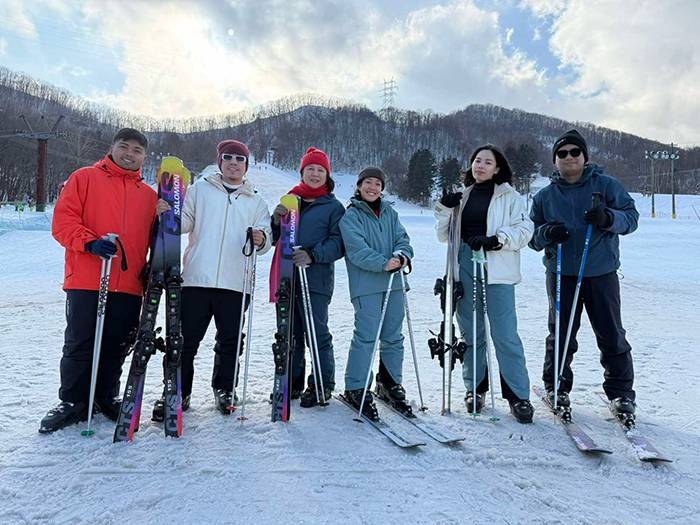
But as soon as the ski staff straps on my rented boots and instructs me to click into my skis, there’s definitely no turning back!
No way will I stay behind and watch everyone else enjoy the slopes! So I grab my stuff and head out with the rest of them.
I start off slow, making my way up sideways on the gentle slope, trying to keep my balance and stay in control. Soon, I muster enough courage to give it a go. With my poles firmly planted on the ground, I nudge forward, glide, and tumble to the ground. And so the pattern continues until finally, I catch my balance and I’m away. I daren’t move anything for fear that my run will come to an untimely end. Probably covering only a short distance, it still feels amazing and I’m hooked!
In that brief moment, I try to convince my (almost) 50-year-old self that—to borrow Elsa’s line—“the cold never bothered me anyway.” But in reality, my hands already feel numb, my nose is running, but my heart is full.
Sapporo sights and landmarks
A block north of Odori Park is the Sapporo Clock Tower, a wooden structure and a symbol of Sapporo. Constructed as a drill hall of Sapporo Agricultural College in 1878, the Clock Tower now serves as a museum with displays on the city and the building’s history. The clock, which was commissioned from the E. Howard Watch & Clock Company in Boston, was installed in 1881. It’s the oldest clock tower in Japan.

Kids and sweets lovers can get their sugar fix at Shiroi Koibito Park, a Japanese version of Willy Wonka’s chocolate factory with its Chocolate Lounge, Soft Ice Cream House, and Cookiecraft Studio. Hokkaido company Ishiya makes its famed Langue de Chat cookies, filled with white chocolate, there. After all, Shiroi Koibito literally means “white lover.”
Royce’ Cacao and Chocolate Town is another must-see destination. The facility introduces visitors to the brand’s farm-to-bar journey. The factory/museum illustrates the entire cacao cultivation process through a range of exhibits and experiences—from growing it on the company’s own “Farm” to transforming it into chocolate bars.
Here, you can get your fave Royce’ chocolates at half the price than the ones sold in Manila.
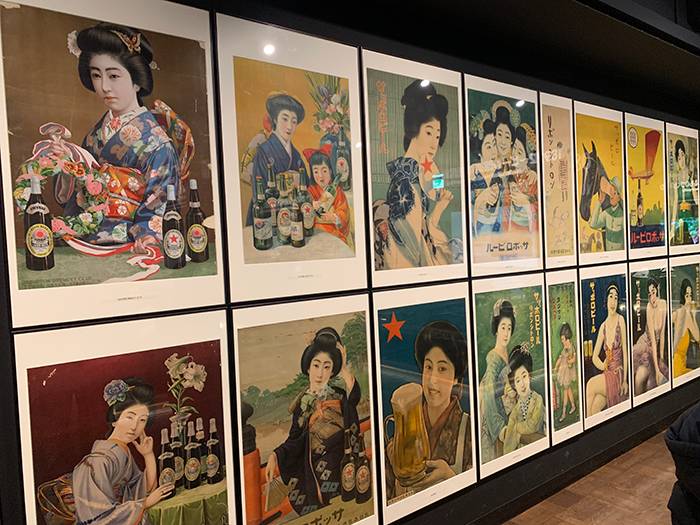
The snow shower continues on our way to Sapporo Beer Museum. We arrive at 10:30 a.m., 30 minutes before the museum opens. Not long after, people start to line up by the entrance, all shivering and wet from the winter rain.
Registered as one of the Hokkaido Heritage Sites, the museum is a must-see destination in Sapporo. The prefecture (Hokkaido) is the birthplace of beer in Japan. And Sapporo Beer, which has been brewed in Sapporo since 1877, is one of the oldest and most popular beer brands in the country.
After watching a short film about the beer brand’s history, the crowd dissipates. Only to find them again at the basement bar enjoying their Sapporo Beer fresh from the tap—definitely a good way to “warm up.”

Next to the museum is the Sapporo Beer Garden, both the locals’ and tourists’ happy place. Popular in the beer halls are all-you-can-drink beer and all-you-can-eat lamb BBQ, a popular local dish named after Gengkhis Khan. It’s Japan’s version of Korea’s samgyupsal. For those, like me, who don’t eat lamb, pork and chicken are included in the set menu, together with thin slices of squash, bean sprouts, lettuce, and mushrooms. You know the drill: Just order what you can consume or pay extra.
Well-fortified, we headed to the Historical Village of Hokkaido, an open-air museum which features relocated and restored buildings that represent the history of Hokkaido from 1868 to the 1920s. To give you an idea of what it’s like, think of Las Casas Filipinas de Acuzar in Bataan.
Opened in 1983, the museum was built to preserve important cultural assets of the prefecture for future generations. There are 52 buildings in all, arranged in four groups: The Town, Fishing Village, Farm Village and Mountain Village. Each building depicts the lifestyles, cultures and industries of the people during the Meiji and Taijo periods. Our group didn’t make it to the Fishing Village as the snow storm rages on.
Exploring Otaru
Hokkaido, which was sparsely populated and considered Japan’s “next frontier” before Sapporo became famous for hosting the 1972 Winter Olympics, now boasts a population of more than 5.5 million. With no typhoons or rainy season to speak of, just a

six-month winter blessed with lots of snowfall, Hokkaido’s mountains attract many Australian skiers and high-end tourists from China.
Traveling south to Otaru, our coach stop at the Sunagawa Highway Oasis, a haven for confectionery where you can buy all your Hokkaido pasalubong, from milk caramels to corn chocolate to melon jelly.
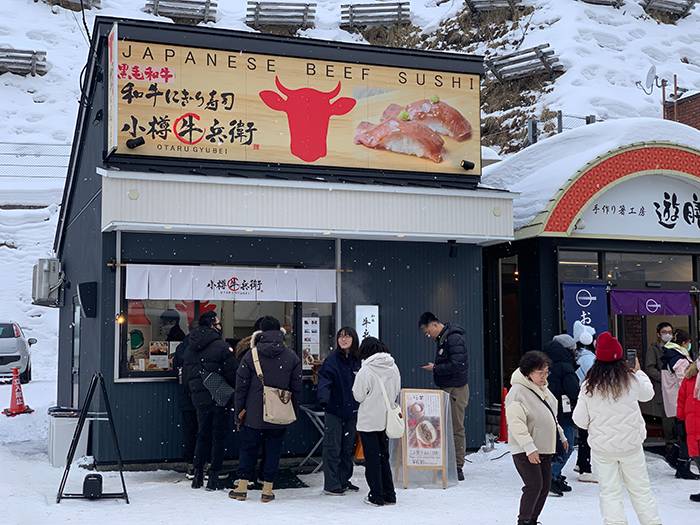
Filipinos are quite familiar with this port city, thanks to the hit movie Kita Kita starring Alessandra de Rossi and Empoy Marquez.
The Otaru Canal, one of the city’s famous landmarks, was the one Tonyo (Empoy Marquez) mistakenly called “Root Canal.” It’s a charming place where you can take a day or night cruise, like what Lea and Tonyo did in the movie. Lined with quaint-looking lamps and buildings, Otaru Canal is, indeed, made for cruising at sunset.
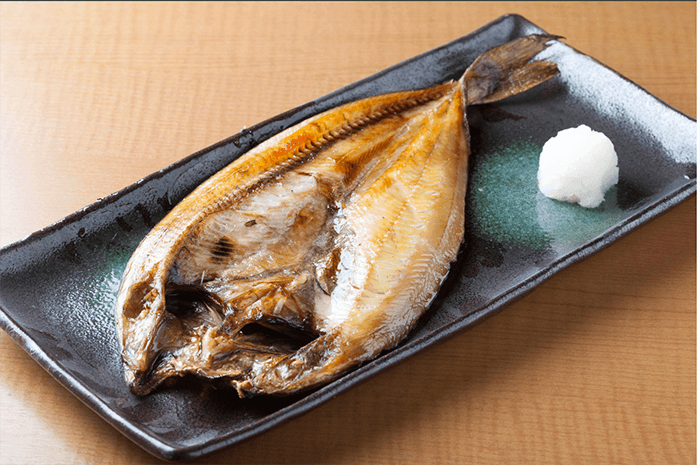
Otaru is known for its glassware (Kitaichi, Japan’s No.1 glass factory, is located here), music boxes and fresh seafood. Food-wise, hokke and sushi are some of the specialties, with over 100 sushi restaurants to choose from. The seafood lunch we had at Otaru Seaport warms the heart and the tummy.
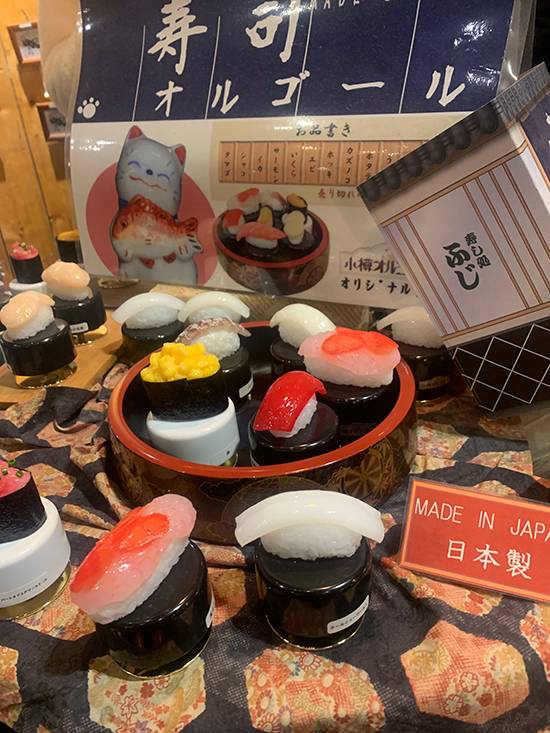
The blue pond & ningle terrace
There’s a famous landmark located in the town of Biei called the Blue Pond, which the locals refer to as a “happy accident.”
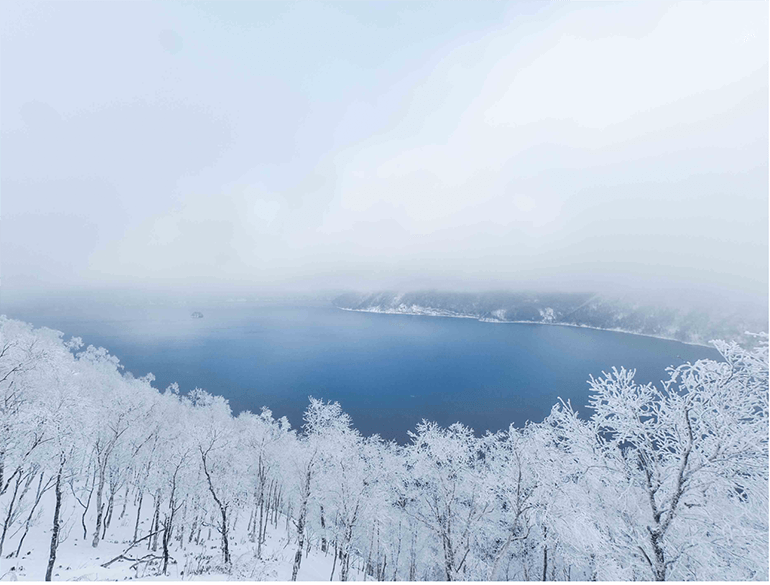
The pond, according to our tour guide Arlina, was created to “stop the damage from mudflows from Mt. Tokachi.”
“Due to the impurities in the waters of the Shirahige Falls, the color of the pond turns from a vibrant turquoise to emerald to cobalt blue,” shares Arlina. “A photographer, who passed by the pond, took a really nice photo, posted it on social media, and it became viral. In fact, this famous pond became an Apple Macintosh desktop wallpaper.”

Sadly, at the time of our visit, the famous Blue Pond looks like an ice skating rink. What a letdown!
Next stop is the Ningle Terrace, an obligatory tourist stop in Furano. This Insta-worthy charming village of log houses is home to local artisans selling their one-of-a-kind wares. At night, the Ningle Terrace is illuminated in dancing lights, “tinting the snowy landscape with its magical hues.”
We end our Sapporo tour on a high note: (window) shopping at Sapporo Station and the malls nearby. After a delicious tonkatsu dinner, I go back to my room, don the yukata (robe) provided, and enjoy the indoor onsen for as long as possible.
On our way to Chitose Airport to catch our flight back home, the snow begins to melt. Small puddles appear where the snow was thick. But the memory of my first snowfall experience in Sapporo will never melt in my heart!


